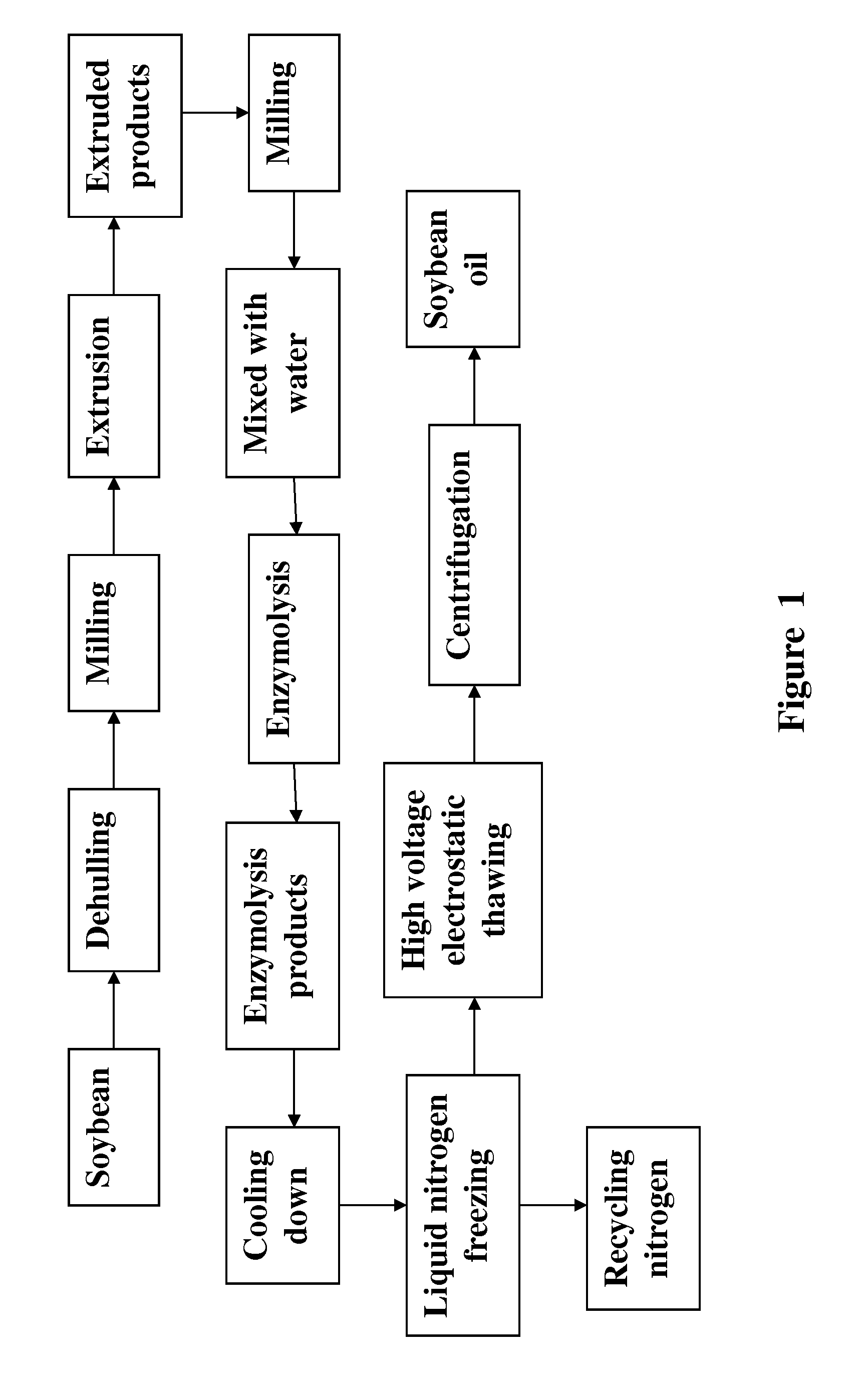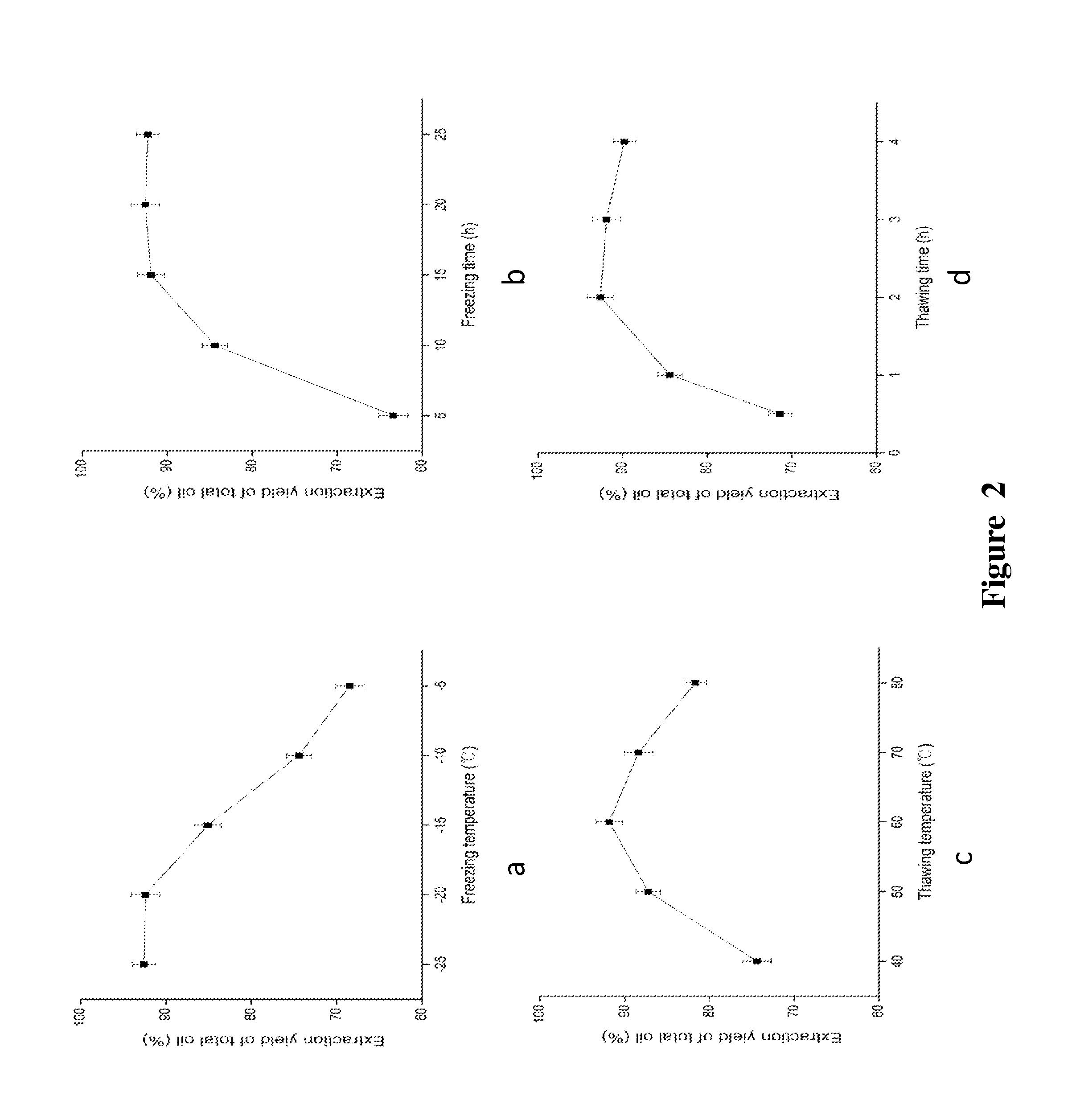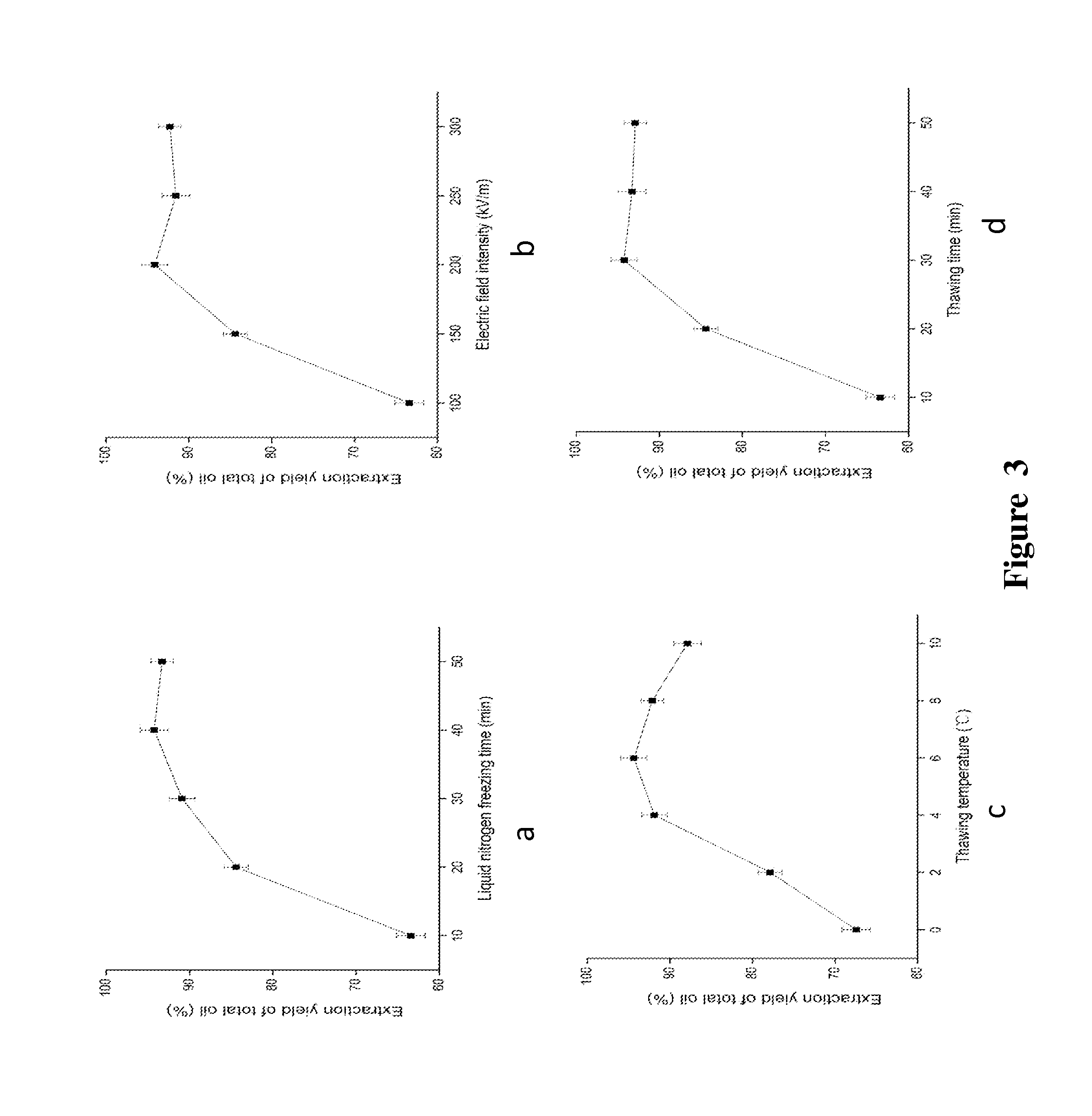Method for Aqueous Enzymatic Extraction of Soybean Oil
a technology of soybean oil and extraction method, which is applied in the direction of fatty-oil/fat production, fatty-oil/fat refining, fatty-oil/fat production, etc., can solve the problems of reducing the stability of emulsion, unstable emulsion, and relatively low oil yield of extracting soybean oil
- Summary
- Abstract
- Description
- Claims
- Application Information
AI Technical Summary
Benefits of technology
Problems solved by technology
Method used
Image
Examples
example 1
[0036]This example provides an extraction method of soybean oil by traditional freeze-thaw method. The method comprises the following steps:
[0037]Soybean was peeled and crushed. The crushed soybean was treated by an extrusion puffing process to obtain a puffed extrudate wherein the sleeve temperature was 95° C., die aperture was 18 mm, screw speed was 100 rpm, and water content was 14%. The puffed extrudate was crushed and mixed with water, which was then hydrolyzed for 3 hours with 3% Alcalase. The conditions for hydrolyzation reaction was as follows: ratio of water to extrudate was 6:1 (ml:g), enzymolysis temperature was 55° C., pH 9.0 and reaction time was 3 hours. The enzymolysate was frozen at −20° C. for 15 hours and thawed at 60° C. for 2 hours. Soybean oil was obtained from the upper oil phase of the centrifugate of the thawed enzymolysate.
example 2
[0038]This example provides an exemplary method of the instant invention for extracting soybean oil using liquid nitrogen freezing and high voltage electrostatic thawing method. The method comprises the following steps:
[0039]Soybean was peeled and crushed. The crushed soybean was treated by an extrusion puffing process to obtain a puffed extrudate wherein sleeve temperature was 95° C., die aperture was 18 mm, screw speed was 110 rpm, and water content was 15%. The puffed extrudate was crushed and mixed with water, which was then hydrolyzed for 3.5 hours with 2.5% Alcalase. The conditions for hydrolyzation reaction was as follows: ratio of water to extrudate was 6.5:1 (ml:g), enzymolysis temperature was 55° C., pH 9.5 and reaction time was 3.5 hours. After cooling down to room temperature, the enzymolysate was frozen in liquid nitrogen (−196° C.) for 40 minutes and thawed under a high voltage electric field (electric field intensity: 200 kV / m), at 6° C. for 30 minutes. Soybean oil wa...
example 3
[0040]This example provides another exemplary method of the instant invention for extracting soybean oil. The method comprises the following steps:
[0041]Soybean was peeled and crushed. The crushed soybean was treated by an extrusion puffing process to obtain a puffed extrudate wherein the sleeve temperature was 100° C., die aperture was 20 mm, screw speed was 120 rpm, and water content was 16%. The puffed extrudate was crushed and mixed with water, which was then hydrolyzed for 3 hours with 3% Alcalase. The conditions for hydrolyzation reaction is as follows: ratio of water to extrudate was 7:1 (ml:g), enzymolysis temperature was 50° C., pH 9.0 and reaction time was 3 hours. After cooling down to room temperature, the enzymolysate was frozen in liquid nitrogen (−196° C.) for 30 minutes and thawed under a high voltage electric field (electric field intensity: 150 kV / m), at 8° C. for 40 minutes. Soybean oil was obtained from the upper oil phase of the centrifugate of the thawed enzymo...
PUM
 Login to View More
Login to View More Abstract
Description
Claims
Application Information
 Login to View More
Login to View More - R&D
- Intellectual Property
- Life Sciences
- Materials
- Tech Scout
- Unparalleled Data Quality
- Higher Quality Content
- 60% Fewer Hallucinations
Browse by: Latest US Patents, China's latest patents, Technical Efficacy Thesaurus, Application Domain, Technology Topic, Popular Technical Reports.
© 2025 PatSnap. All rights reserved.Legal|Privacy policy|Modern Slavery Act Transparency Statement|Sitemap|About US| Contact US: help@patsnap.com



